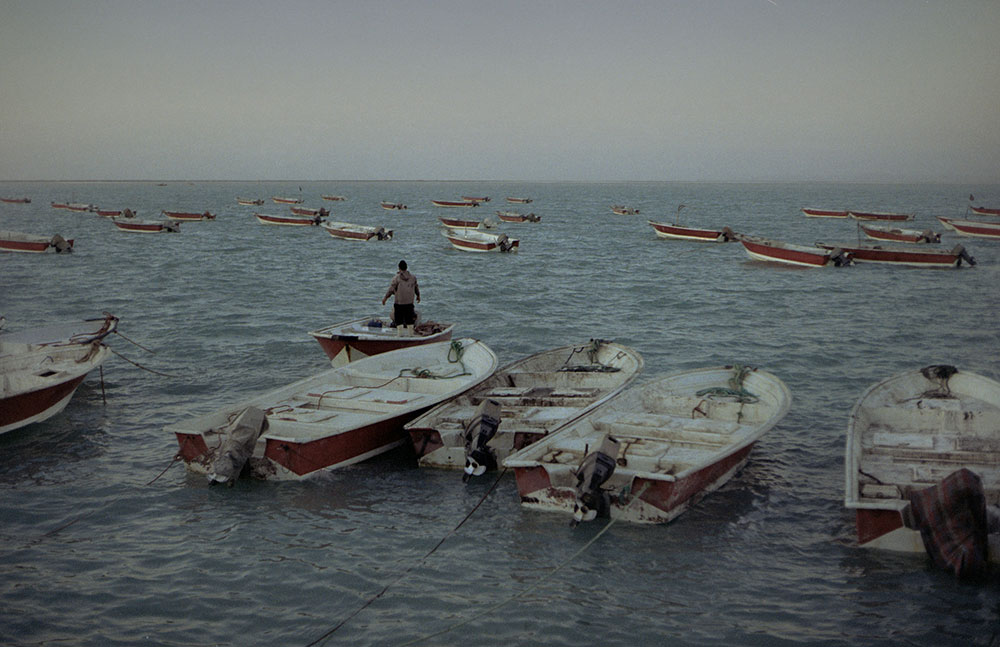In Shahab Mihandoust's documentary Meezan (2024) we're told that the eponymous word can refer either to a cluster of 36 stars or a scale. The latter is doubly significant for the fishermen who weigh their catch near Abadan in southern Iran. Mihandoust's film probes the economic value ascribed to these workers in three discrete chapters, eschewing didacticism for a demonstrative observation of its subjects and their environment; his tripartite transition from the open sea to a processing plant avoids casting Iran in an antediluvian light. “The atmosphere oppresses you,” a fisherman says of their profession, effectively summarizing the inherent solitariness of work performed by men in the Arvand River or on a Bahrakan wharf. Mihandoust's cinematography nevertheless imbues extended sequences of its subjects tying knots or shelling shrimp with a subtle warmth that emphasizes the humanity fueling menial labor.
Most of the subjects in the film remain unidentified and disengaged from Mihandoust and his camera. When they do speak, it's often in voice-overs paired with black screens during which they discuss their professional ties to the fishing industry, which dates back to the Iran-Iraq War. Adaban’s population was reduced to six at the height of that war. This statistic remains unaddressed in the film yet continues to haunt the collective memory of the nation. Indeed, the film’s opening shot of an oil refinery built by the British foregrounds the multivalent forms of unresolved historical trauma that haunts Abadan.
Shot in the winter of 2020, Meezan’s footage also provides a look at another chapter in Abadan’s recent history. Remarks made to the then-nascent period of the Covid-19 pandemic complement scenes of fisherman haggling for a fair price for their catch. More than a contextual framework for western viewers, these candid moments underscore the urgency of equitable compensation for those with the least sway within late-stage capitalism. Mihandoust expands this point to include commentary on the gendered hierarchies of labor in Iran by observing how the plant workers in the final chapter are almost exclusively women. In a protracted static shot, we see one of these women un-shell and devein shrimp at a furious speed. The soft squish of flesh beneath her gloved fingers is overwhelmed by plangent, metallic clangs from unseen industrial machinery. The film’s four-channel soundscape subtly immerses the viewer within this aural schism to make immediate the depersonalization such conditions produce from culture and community. Yet the film’s unwavering gaze compels us to take heed of the human vitality effaced by mindless consumption. In its swift 70-minute runtime, Meezan’s socio-political undercurrents are ultimately measured by their minute manifestations in the present tense.
Meezan screens this afternoon, April 14, at the Museum of Modern Art as part of “New Directors / New Films.” Director Shahab Mihandoust will be in attendance for a Q&A.



